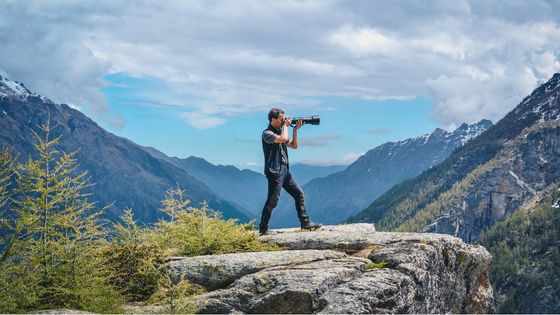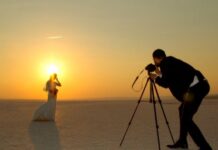Wildlife photography is a highly competitive and challenging field requiring much dedication and hard work. Taking beautiful pictures of animals in their natural settings is a challenge. Yet for individuals with an eye for composition and an appreciation for nature, wildlife photography may be a really satisfying profession. This article will explore what it takes to become a wildlife photographer.


Guide on Becoming a Wildlife Photographer
Education and Training
While formal education is not always necessary, many successful wildlife photographers have degrees in photography, biology, or a related field. Additionally, specialized training in photography techniques and equipment and knowledge of animal behavior can be extremely helpful in this field. Some photographers attend workshops or seminars to gain additional skills and knowledge.
Equipment
Wildlife photography requires specialized equipment, including a high-quality camera, lenses, and accessories like tripods, camera bags, and filters. Long lenses are a common investment for wildlife photographers so that they may picture animals from a safe distance. During hunting, they wear camouflage, employ blinds, and hides to remain undetected and make the most of their opportunities.
Fieldwork
To become a successful wildlife photographer, fieldwork is critical component. Photographers must spend time in the wild, observing animal behavior, tracking wildlife, and finding the best vantage points to capture their shots. This requires patience, perseverance, and a willingness to spend long hours in the field, often in difficult or uncomfortable conditions. To capture the perfect shot of a majestic buck in its natural habitat, setting up a deer feeder can be a great way for a wildlife photographer to attract these elusive creatures.
Networking
Networking is an essential aspect of becoming a successful wildlife photographer. Photographers need to build relationships with other photographers, conservationists, and wildlife experts to gain access to the best locations and opportunities. Social media platforms, such as Instagram and Facebook, can be effective tools for building a following and connecting with other professionals in the industry.
Marketing
Marketing is crucial for building a successful wildlife photography career. Photographers must showcase their work and build a brand that distinguishes them from others in the field. This can be accomplished through online portfolios, gallery shows, and participation in competitions or exhibitions. Building relationships with potential clients, such as magazines, conservation organizations, and wildlife tourism companies, can also lead to lucrative opportunities.
Benefits of Becoming a Wildlife Photographer
Connecting with Nature
Wildlife photographers spend most of their time in the great outdoors, allowing them to connect with nature on a deeper level. By observing and photographing animals in their natural habitats, you’ll develop a greater appreciation for the beauty and complexity of the natural world.
Conservation Efforts
Wildlife photographers play a crucial role in promoting conservation efforts. Through your photographs, you can raise awareness about the plight of endangered species, highlight the impact of climate change, and promote eco-tourism.
Unique Perspective
The ability to shoot wild creatures in their own environments allows wildlife photographers to produce striking and original photographs. If you take pictures of the natural environment, maybe more people will realize how important it is to keep it that way.
Travel Opportunities
Wildlife photography can take you to some of the planet’s most remote and exotic places. From the savannahs of Africa to the rainforests of South America, you’ll have the chance to explore different cultures and landscapes while doing what you love.
Personal Growth
Pursuing a career in wildlife photography can also help you grow as a person. You’ll develop patience, perseverance, and adaptability as you navigate the challenges of photographing wild animals in their natural habitats.
Contribution to Science
Your photographs can also contribute to scientific research. By documenting animal behavior and habitat, your images can help researchers better understand the natural world and make informed conservation decisions.
Downsides of Becoming a Wildlife Photographer
Financial Instability
Wildlife photography can be a difficult field to make a consistent income from. Freelance work can be sporadic, and long periods between jobs may exist. Factors including the weather, geography, and economic environment may also have an impact on earnings.
Physical Demands
Wildlife photography can be physically demanding, requiring long hours in the field, often in difficult conditions. You may need to hike long distances, carry heavy equipment, or endure extreme weather conditions.
Safety Risks
Photographers that specialize in wildlife are sometimes put in perilous situations due to their proximity to wild creatures. And they could be toiling away in outlying places where there aren’t any hospitals to turn to if anything goes wrong.
Conclusion
Wildlife photography requires knowledge, fieldwork, equipment, networking, and marketing. It’s a competitive industry but can be rewarding for any wildlife and photography enthusiast. Wildlife photographers must work hard, get the right gear, and practice in the field. If you wanted to take wonderful photos of animals in their natural surroundings and share your passion for nature, start your wildlife photography journey today!






















